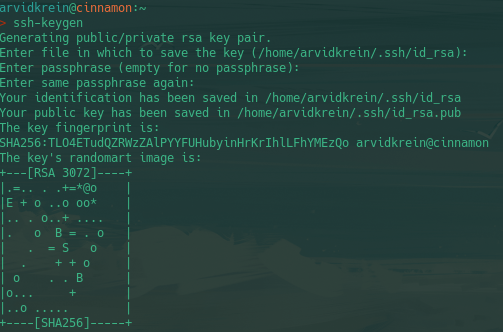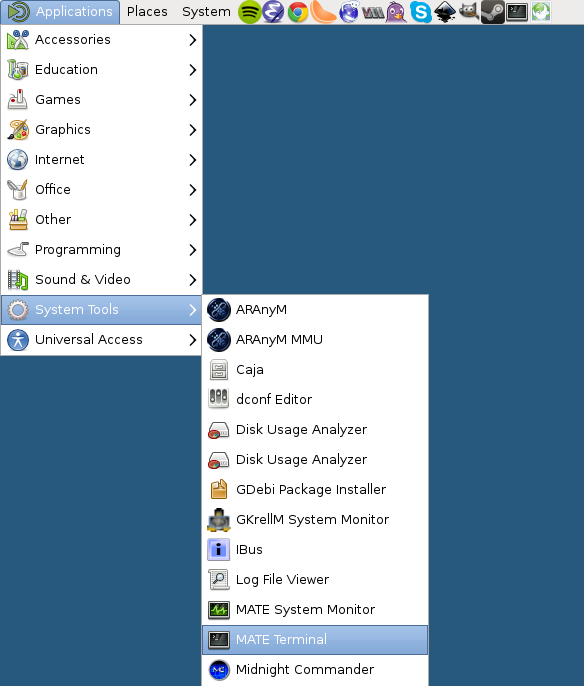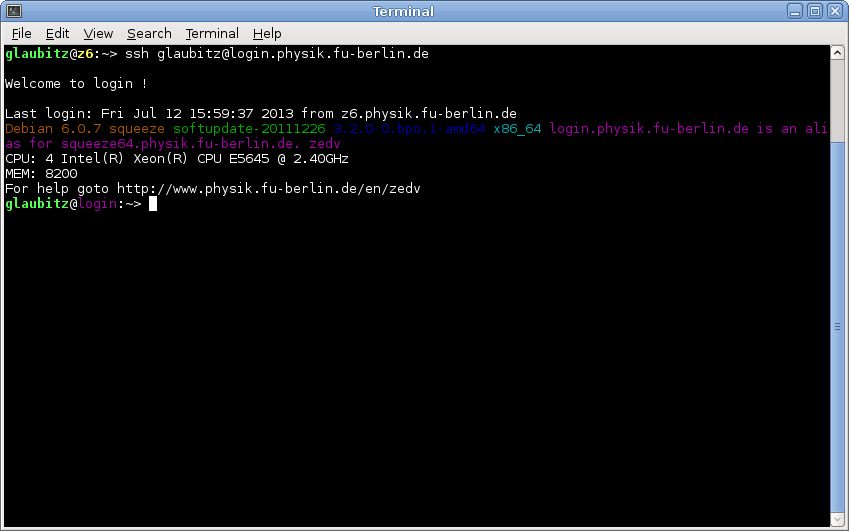Connecting to a Linux computer using SSH from a Linux computer (text mode interface)
Many software applications on Linux are designed in a way that they can be used using a text mode interface only. This means, there is no graphical user interface which is operated with a mouse or a touchscreen but just a command prompt which takes single text commands which can be combined with options and parameters.
To connect to a remote computer running Linux through SSH from a computer running Linux, first navigate through your Applications menu, find the System Tools submenu and click Mate Terminal.
The terminal window should open similar to the following picture. To establish an SSH connection to a remote Linux computer at the department, type:
ssh username@computer.physik.fu-berlin.de
It is highly recommended to use the computer login since it is a machine guaranteed to be running 24/7 and has enough hardware ressources to be used by several users simualtanously for login.
Thus:
ssh username@login.physik.fu-berlin.de
The SSH command has some additional, useful options:
- -x - disable X forwarding
- -X - enable X forwarding (allows to run remote graphical applications); use together with -C
- -C - enable compression; use this when enabling X forwarding
Key authentication (required from outside the FU network)
Remote access using ssh from outside the FU network now requires ssh-key authentication. Key authentication works by having files on each machine that act as sort "password" instead.
To create a key file, on the local computer use the command ssh-keygen and follow it's instructions.

By default this command produces two files in the .ssh subdirectory of your home folder.
The file id_rsa is your key file, also called private key.
The file id_rsa.pub is the corresponding lock, also called public key.
To complete the setup you have to append the contents of id_rsa.pub to the .ssh/authorized_keys file on the remote computer.
One way to do this is to move id_rsa.pub from your local to the remote computer and then, on the remote computer run
<xterm>
cat id_rsa.pub » .ssh/authorized_keys
</xterm>
Now you should be able to log in using key authentication.


